With its Louis Comfort Tiffany glass and blue ceramic décor, carved woodwork and Romanesque ivory friezes, the Veterans’ Room of the Park Avenue Armory is one of the most beautiful rooms in New York for the performance of music. The most succinct way to describe Karim Sulayman’s recital there, with guitarist Sean Shibe, last Thursday (repeating an earlier equally sold-out performance on Tuesday) is to say that the music-making was worthy of the matchless venue.
But the musical beauties of the program entitled “Broken Branches” (which Sulayman and Shibe have recorded and have been touring) were subtler than the gorgeous Beaux Arts mishmash of the room.
Sulayman, a Lebanese-American tenor with an astonishing command of styles and of languages—and flawless diction in each of them—well, in English, Italian, Ladino, Arabic, and Spanish on this occasion—which included English translations from Arabic and Chinese.
“Broken Branches” refers to the complicated genealogy of melody, the links across the Mediterranean from Sephardic Spain to Mameluke Syria, and so on, through time and space in all directions. The program notes have the temerity to link Italian madrigals to Sumerian chants—speculative to say the least—and the songs chosen provide a flavor of cultural mixture.
The message of these two performers, who met as students at the Marlboro Festival in 2007, is a nationality-defying curiosity that they turned into a commentary on many civilizations. At Marlboro, for example, they were first assigned to work together on a piece unknown to them and, I suspect, to nearly all of today’s audience: Benjamin Britten’s setting of Arthur Waley’s translations, “Songs from the Chinese.”
Sulayman’s intentions are to demonstrate links and roots, in themes musical and poetic, crossing every boundary of culture, religion, nationality, genre. Are the links he detects so precise, so traceable as he insists they are? I don’t find the link from Aleppo to Venice or Sumer to Zaragoza quite so clear—but he’s the artist; he can opine whatever he likes, since his vocal arguments are so ravishing.
This noble ambition, astonishingly achieved, reminded me of the work of Jordi Savall and of the current mashups of baroque and folkloric and popular music from Germany to Mexico to Crete, from Philadelphia to Williamsburg and Little Island, and those are just the ones I’ve heard about. For singers trained in opera but finding it difficult—or simply dull—to earn a living the old-fashioned way, such ambitions surely foreshadow a livelier future.
On a more traditional level, Sulayman possesses the two skills required from a singer of art song, once the vocal gifts have been trained: he is a great storyteller and a natural actor. He reminded me not only of such art singers as Herman Prey and Thomas Quastoff, but of those popular singers—I thought of Judy Garland, but other names may occur to you—who inhabit the lyrics of a song, who enact the principal figure in the verse set to music, who suggest their deepest feelings.
The tenor’s voice is rather grainy than smooth, capable of descending to a baritonal somberness for mourning or deep reflection, then of rising effortlessly (with no audible break) to lyrical tenor phrases, spreading its wings to heaven when an amorous effusion (or a rooster’s crow) demands it. Now and then (infrequently in this program) a clarion outburst can be heard, the sort one might expect of a Verdi or Puccini hero in military charge, to illustrate some figure of speech or lover’s yearning. His ornaments are suitable, in turn, to the style of Monteverdi’s madrigals or to contemporary Arab Beirut or, in an encore, the outcries of a proverbial Mexico.
His accompanist/partner, guitarist Sabe (a half-Japanese Scot), admits to being delighted when his slightly pop technique annoys professional lutenists. He enjoyed giving Sulayman a rest now and then by providing a guitar interlude from the repertory being performed, leading by a natural segue back to song as soon as we were in the right mood and key.
Two of the fathers of opera were represented: Giulio Caccini’s “Dalla porta d’oriente” (From the gateway to the east), a lover’s admiration of his lady in the hues of sunrise, apparently sung from the other side of their bed at dawn. Figure of speech piles on figure of speech, as if the man is telling a witty story at a drinks party, but Sulayman’s gracious restraint kept within poetic bounds.
This was followed by two Monteverdi songs: “Si dolce è il tormento,” the lament of a lover held at bay, set beside “La mia turca che d’amor” (My Turkish girl), a similar situation declaimed to such overblown effect—each verse wobbling on the words “doppio mio martoro,” my suffering doubled, as the suitor wallows in frustration. “Languendo, moro” –languishing, I die. Of course he doesn’t. He’ll sleep it off somewhere. For this silly caricature, Sulayman’s voice seemed to grow in size, almost to lose control, as he babbled of his misery. The guy is a natural comedian.
Contrast followed at once in the brief Sephardic song, “La prima vez,” in which Sulayman became an epigrammatic and genuine lover: “Come closer, beloved, discover yourself, and tell me secrets of your life.”
From the Ladino songs that mingle Andalusian traditions, medieval Jewish ones and a touch of troubadour Provence, Sulayman moved to modern Lebanon, his own ancestral land, another place where many traditions mingle. “El helwa di” (The beautiful one) is a poem set by Sayed Darwish, a turn of the century musician, preceded by a guitar interlude that mimicked Syriac drums, and tells the story of lovers (male and female? Male and male? Unclear, and who cares?) who awake at cockcrow (Sulayman had fun blaring cockcrow three times, ever louder and more insistent), who walk, penniless, to work, united by the hands held each in the other. It is a vignette—a scenic picture of simple life, but also of a nation.
“Li Beirut” (For Beirut) by Fairuz, is the melancholy anthem of a beloved, ruined, unforgotten homeland. Fairuz, who refused to abandon Lebanon or to perform in public during the civil war, opened the brief, hopeful period of the 1990s by singing this song in public, emphasizing the city as a mother and refuge, and it has been the city’s anthem during all the hopeless years since. A Maronite Christian, she has refused to identify with any side during the war. Sulayman performs it with melancholy suggesting a determination to survive.
Fairuz has been accused of borrowing the melody from Rodrigo’s “Concierto de Aranjuez”—but isn’t that how folkloric melodies have always traveled? A few notes recalled as the new melody is devised? And are not the roots of war-torn Lebanon similar to those of the medieval Spain, whose Muslim and Jewish refugees often carried little but their songs when they fled? Hasn’t this sort of cross-cultural art been the theme of the entire concert?

Paris-born Lebanese Layale Chaker’s “A Butterfly in New York” is a song of regret for the passing of time, of recollecting thirty years later, a life begun in Baghdad by a child chasing butterflies. It concludes “I live like a broken branch,” and on the repeat, that line breaks off, as if a song was broken, the way a family tree might be broken, or a tradition.
The final set of the program was Britten’s “Songs from the Chinese,” filled with the sort of caressing phrase Britten designed to exploit the particular voice of Peter Pears. Pears’s ghost seemed to haunt the very different Sulayman instrument. They were all pessimistic songs, autumnal regrets at the hopelessness of effort (“The Big Chariot”) or the change of fashion (“The Old Lute”).
I loved the way Sulayman’s voice, in “The Herd Boy,” caressed the phrase of the “dark smoke oozes through the thatched roof,” the timbre itself oozing in the notes through a genuine life. And then “Dance Song” builds rhythm on the hectic tragedy of a bloodthirsty crowd unaware of the wonder of capturing a unicorn.
There was one encore, Tomás Méndes’ “Cucurrucucú Paloma,” a ballad of a mourning dove which allowed the singer to launch great keening “Ayayaye’s with much gusto, leaping from tenor to a triumphant near-falsetto. Such tricks add to his arsenal of storytelling, but never interfere with his superbly trained musicality.
Photos: Da Ping Luo
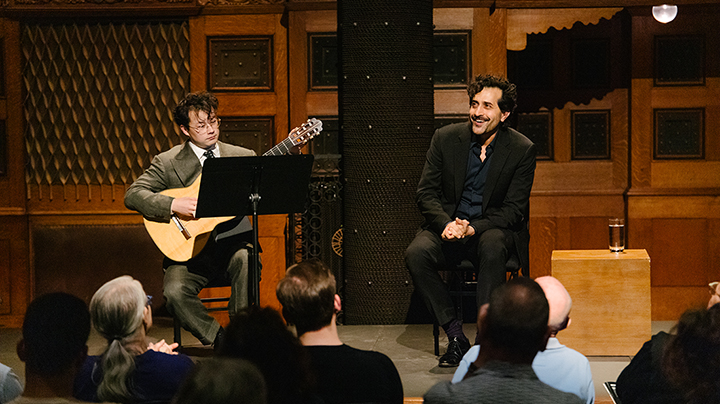

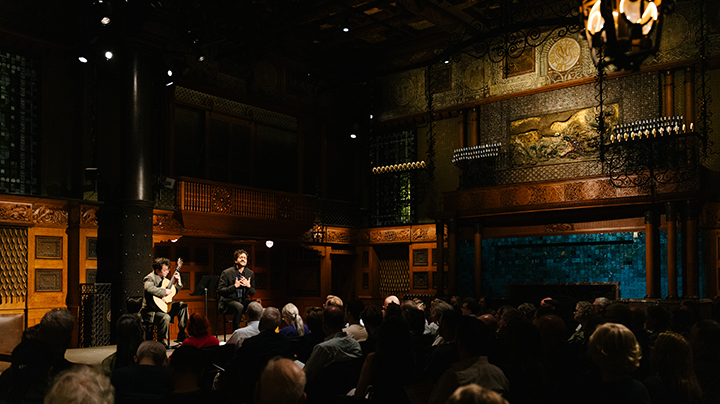
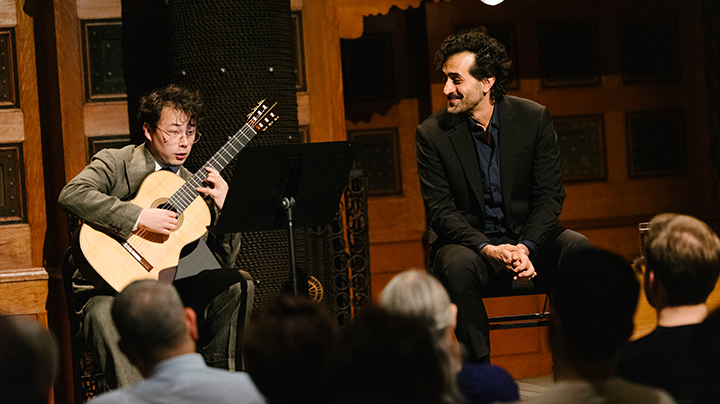
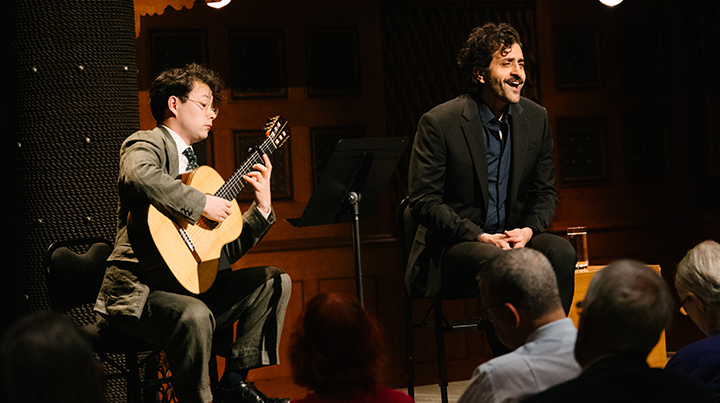

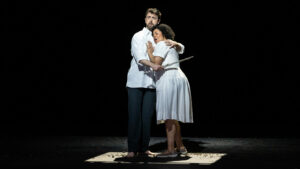
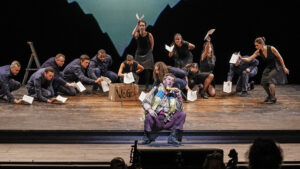

Comments